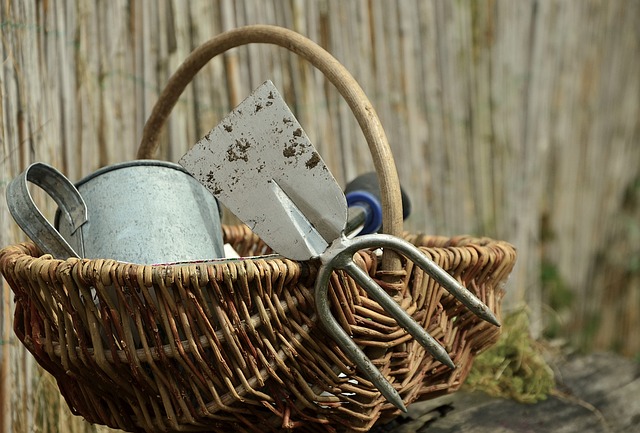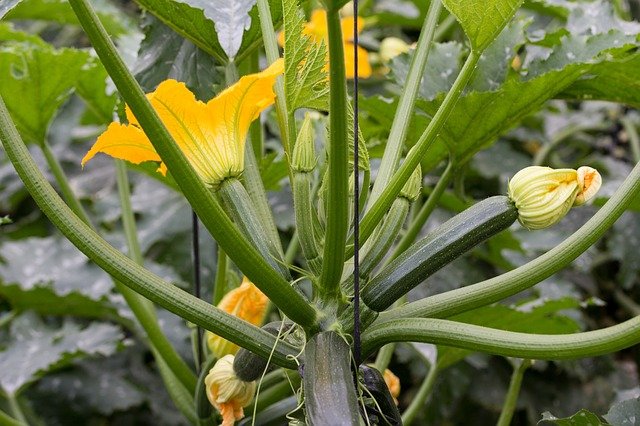Growing your own vegetables at home is an immensely satisfying and nourishing hobby, and it can be so simple, starting a small garden.
If you are wanting to start a vegetable garden, here are some simple steps to help feed your family with home-grown, nutritious veggies like pumpkins throughout the year.
Why Creating A Vegetable Gardening?
Step 1) What Tools Do You Need to Start Gardening?

To start a vegetable garden, you need only a few things. This includes some space in which to grow and a few simple tools, like pruning shears, a spade or trowel to plant your vegetables, work the dirt and maintain the plot.
Here is an idea – Why not offer yourself a nice wicker garden basket to keep all the tools organised. You could buy it as a birthday gift if you know someone, who’s a gardener.
In addition, you’ll need seeds, a watering can or hose, and a motivation to eat healthy, fresh veggies and be hands-on with the soil.
For inspiration, read books and magazines to get gardening tips.
Starting a vegetable garden/plot can be done at any time of year, however, the best times would be in the early Spring or Autumn.
Step 2) Find the Right Location
When starting a vegetable plot you need to choose a good location, this decision is going to be vital to its success. There are a few key factors to think about as part of an initial garden plan as follows:
Sunlight
A vegetable garden, like all plants, need access to sunlight in order to photosynthesize and grow. An ideal spot for a new garden would have on average around 6-8 hours of direct sunlight. However, some plants like root vegetables can grow successfully in around four hours.
No crops are going to thrive in deep shade or under the shadow of a big tree.
Water source
As well as the sun, water is essential for growing vegetables. In the summer, plants need regular irrigation to help them grow strong, so make sure there is convenient access to water.
Having the vegetable garden plot near taps ensures you don’t have to carry cans a long distance, while you can also connect hoses or sprinklers to moisten the ground.
Remember that plants need a good soaking, making sure the water goes all the way down to the roots, and it is recommended to water either in the morning or evening rather than in the heat of the day.
The Right Area/Access
An area in your own garden close to the house means you don’t have to carry gardening tools a long way to the patch, you are closer for watering, and it can make it quicker to get harvests from the garden straight into the kitchen.
Step 3) Think About Garden Size
The size of a new garden is often determined by the amount of outdoor space you can find. However, any budding green-fingered growers can take solitude from the fact you can have a successful kitchen garden in any size space.
Some people have the luxury of large spaces, like a walled garden, while others may have just a small corner in a home garden or a few beds in which to start.
Step 4) Starting With a Small Plot
Starting small can be the ideal solution for a first vegetable garden. If you start small, then there are some big advantages. It offers you the chance to learn and develop your growing by choosing a few key crops to focus on – and you will be amazed by the amount of food you can get from a small space.
You will also quickly learn (if you enjoy the new hobby) and are able to dedicate the time to it, as it does require time to sow seeds, plant, water, and weed your vegetable garden.
Take your time and don’t tackle too large a space too quickly for a first garden. Start small, pick a seed packet or two and cultivate a bit at a time.
You can cover unused areas with cardboard or plastic to leave them for when you’re ready to expand.
You first need to prepare the spot by removing all perennial weeds before even starting to think about starting to plant vegetables or sowing seeds. Dig the soil, rake it level, and remove the largest stones as you go.
Step 5) Understand Your Soil (PH)
Whatever you choose to grow in your new vegetable garden, an important factor in its success will be the garden soil. It is the key to growing vegetables, and you need to understand what you have on your plot if you want to get the most out of it.
The best healthy soil will help give you strong plants and a bountiful harvest. It is the texture or make-up, that will determine how the terrain drains water and holds the vital nutrients like nitrogen, phosphorus, and potassium that help plants grow.
Garden soil testing
Test your soil to see what it is made of and find out how acid or alkaline it is. Neutral is best for most vegetables. If it is poor, amendments can be added to create a perfect environment.
Adding organic matter like manure or compost will boost the level of vital nutrients that will help your vegetables flourish, as well as help with drainage and structure.
Step 6) Make a Garden Plan
Get a pen and paper and start to draw out a basic garden draft. Devise a crop rotation in your garden planner by grouping the vegetables you want to grow together by family.
Rotating can help increase soil fertility and structure, and also prevent the build-up of diseases within the land.
If you intend to put paths in your garden, don’t make them too wide as they will take up valuable growing space.
When thinking about the growing season, remember there are different seed sowing times depending on your region and frost dates, and plants mature at different rates depending on the specific weather locations.
You see recommended sowing dates on the back of seed packets that you would find at most garden centers.
Different plants also take up variable amounts of space, so when planning what to grow, make sure you have the space to accommodate the crops you want.
Those such as pumpkins spread wide and require lots of room, while radishes can be grown tight together in rows.
Also, in your garden planner, utilize vertical space by growing pole beans and squashes up supports.
Step 7) How & What Vegetables to Grow?
Before starting a new vegetable garden, you need to decide what to grow, what benefits will it have on your heath and of course the main focus should be to grow what you like to eat.
Think about what you and your families’ favorite vegetables are, and aim to concentrate on growing those core staples. That should not be very difficult :).
We love zucchini. It’s delicious and makes a very versatile cooking veggie.
You could always ask at your local garden center which plants varieties do well for novice gardeners.
As a beginner, also consider starting with growing vegetables that are both simple and productive. Some vegetables are easier than others to grow, those such as potatoes, beans, radishes, pumpkins, or peas are a good starting block from which to hone your vegetable gardening skills.
There’s always room for experimenting and trying something new – there are a plethora of crops you can grow depending on your set-up – but thinking about what you like to eat should be the priority when planning.
Related: How to grow tomatoes
Follow and read these Important steps below.
Raised Beds and/or Containers?
Vegetables don’t have to be grown in the ground and can be really successful in raised beds or containers. A raised bed is simple to build and offers the advantage of being able to fill it with new, nutritious fertilizer.
They also mean less bending to plant, weed, and harvest the vegetables and the edges can be used as a seat to relax. See this Good Housekeeping guide for how to build a simple raised bed. If you are really short of space or live in a city where land access is limited, lots of vegetables can be grown in pots or window boxes.
To Dig or Not to Dig
Traditional methods for starting vegetable gardens tend to involve digging the soil to a spade’s depth and turning it over, or double-digging to twice that depth and incorporating organic matter.
There are however new gardening techniques becoming popular that remove the need for strenuous digging and working the soil, relieving pressure on your back and also stopping the destruction of microbes in the soil or affecting the structure.
Minimal till reduces the disturbance on the soil and involves just working the top inch or two. No-dig growing reduces any need to till and allows for new beds to be made up very quickly.
No-dig involves putting a layer of cardboard topped with a thick layer of mulch – such as compost or manure – straight onto the landscape, even on top of lawns. Once built, you can plant straight into the bed.
Growing Your Fresh Vegetable Garden Undercover
A vegetable garden can include a range of structures to grow in, which increases the options available when it comes to what you can grow.
A greenhouse offers the chance to sow seeds and raise seedlings earlier in a warm indoor environment and gives space to grow heat-loving plants. Cloches can be used outside to warm the ground earlier and allow for earlier sowing of seeds, while also offering a protected environment for the young plants to grow in.
Dealing With Pests/Weeds
Two constant battles for any garden are pests and weeds. Unwelcome plants compete with your vegetable plants for sunlight, water, and nutrients and can hamper your crop if left to prosper. Be on the constant lookout for weeds and try to keep them at bay.
Animals like rabbits or deer can all too easily munch through precious plants, so any new garden needs barriers to stop this wreaking havoc. If there is a risk of deer, then a fence around eight feet is needed to stop them from jumping over.
Fences for rabbits need to be far shorter, but do need extending underground to stop them burrowing under.
Companion planting part one can be used as part of your plan to help deter pests from attacking your plants. There are many recommended companion planting combinations, such as marigolds tempting aphids from beans while also attracting beneficial insects.
Plants may need netting during the season to prevent attacks from pests, while simple DIY methods can be used such as using old CDs to deter birds from pecking at plants.
Image credit: Conger design

Leave a Reply
You must be logged in to post a comment.